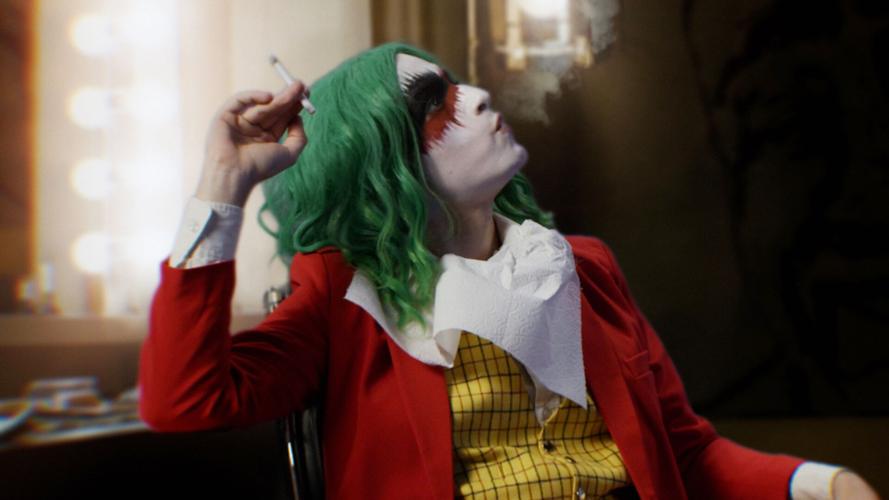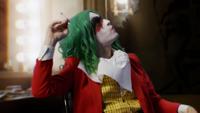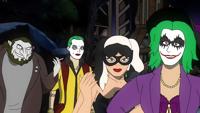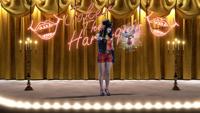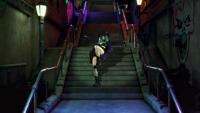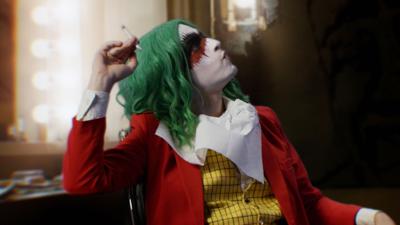The character of Batman was created in 1939 and has since become emblematic of vigilante justice. Since 1940, that character has always had a sidekick named Robin. The two would fight crime in costumes at night as the so-called "Dynamic Duo." Bob Kane and Bill Finger created the characters and the original intention was a sort of Sherlock Holmes and Dr. Watson relationship but that included martial arts, acrobatics and colorful outfits, resembling animals. Following World War II, another interpretation was added. Frederic Wertham, a German-American psychiatrist, wrote a book called Seduction of the Innocent (1954), which interpreted the relationship between Batman and Robin as a homosexual one. The book was part of a wave, known as the lavender scare, a type of homophobia that coincided with the Communist red scare of the time.
Since then, there have been nods to Batman and Robin's potentially queer connection. Batman (1966), starring Adam West as Batman and Burt Ward as Robin, was considered camp, a style that was appealing or inspired by queer culture. Reportedly, Burt Ward's autobiography implied that Batman and Robin could be lovers. Batman Forever (1995) and Batman & Robin (1997) were directed by openly gay filmmaker Joel Schumacher and both those titles were seen as highly homoerotic, if not also camp. The TV series Saturday Night Live or SNL spoofed the idea of Batman and Robin's queerness with 'The Ambiguously Gay Duo.' Over the past 15 to 20 years, DC Comics has included LGBTQ characters in their Batman story lines, particularly when it comes to the various incarnations of Robin, making Robin mostly bisexual or the B in LGBTQ.

It would probably take another 15 or 20 years before DC Comics introduced a transgender character. Transgender is obviously the T in LGBTQ. However, transgender filmmaker Vera Drew didn't want to wait that long. Her pastiche here is not only a patchwork of various interpretations of Batman and Robin's queerness, but also a patchwork of various animation-mixed-with-live-action filmmaking styles. That patchwork feels like one almost out of necessity. It's doubtful that a $100 million budget, which is about the standard for a DC Comics film, would be given to a transgender woman to make her trans-interpretation of these iconic characters, so Vera Drew likely had to scrape together what she could, using cheap animation to illustrate scenes she didn't have the money to film otherwise.
Her aesthetic though could also be a deliberate choice. The look of the film could be deliberate in order to underscore the ridiculousness of the experiences or to underscore her feelings about it all. Despite the characters she's wielding, Vera Drew isn't telling a crime drama or even a crime comedy, which would be the normal narrative for a Batman-connected or even Batman-adjacent story. Drew is actually telling two stories. The first is simply a coming-of-age tale for a transgender woman. The second is a critique of the state of comedy in the United States within the past decade and certainly in the wake of the Me Too Movement.

Drew has mainly worked as an editor for various TV shows, mainly comedy shows. When it comes to critiquing comedy, her main target seems to be Lorne Michaels, the showrunner of SNL. Yes, it's a major staple in the comedy world and certainly is a fixture of New York City. Drew seems to critique how the show recruits talent and what material is or isn't allowed. It seems as though Drew has some personal grievances against SNL and Lorne Michaels in particular. Having not much knowledge about the inner-workings at SNL, I'm not sure I grasped all the jabs. SNL itself routinely spoofs Michaels, so I'm not sure what mileage these jabs will get. The only true jab is that SNL has never had a transgender cast member or transgender host. Yet, the show has had people host who have made anti-trans statements. Molly Kearney is SNL's first nonbinary cast member, but Kearney was hired in 2022 after this film was made.
In terms of the comic book stuff, the characters could be anything. It didn't have to be DC Comics characters. Instead of the Joker, it could have been Krusty the Clown. Vera Drew basically becomes a hybrid of Joker and Harley Quinn, but again, I don't think that the utilization of those characters is such that it had to be those characters. All the DC Comics stuff feels like window dressing. The only time it's not is in the portrayal of Jason Todd, played by Kane Distler. In Vera Drew's interpretation here, Jason aka "Mr. J" was the gay lover to Batman. In the comics, Jason Todd was a version of Robin, but here Drew portrays that relationship as an abusive one where Batman was a groomer or essentially a pedophile.

Portraying a gay man as a groomer or pedophile feels less like a queer interpretation and more of a talking point on right-wing media and conservative radio. It feels like an anti-gay stereotype or trope. It also might be Drew's willingness to be brutally honest and biting even toward those in the LGBTQ community. She's even able to critique herself or critique other trans-people. There are perhaps those who believe people on the left don't like comedy or don't like comedy that makes fun of those in the LGBTQ community. This film is proof that that's incorrect.
Not Rated but for mature audiences.
Running Time: 1 hr. and 32 mins.
In select theaters.
Go to https://www.thepeoplesjoker.com/ for screenings.


